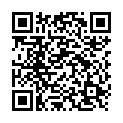|
|
|
| Module code: E613 |
|
2V+3P (5 hours per week) |
|
6 |
| Semester: 6 |
| Mandatory course: yes |
Language of instruction:
German |
Assessment:
Oral examination
[updated 12.03.2010]
|
E613 Electrical Engineering, Bachelor, ASPO 01.10.2005
, semester 6, mandatory course
|
75 class hours (= 56.25 clock hours) over a 15-week period.
The total student study time is 180 hours (equivalent to 6 ECTS credits).
There are therefore 123.75 hours available for class preparation and follow-up work and exam preparation.
|
Recommended prerequisites (modules):
E517 Optical Communications Systems
E518 High-Frequency Engineering
[updated 12.03.2010]
|
Recommended as prerequisite for:
|
Module coordinator:
Prof. Dr. Martin Buchholz |
Lecturer:
Prof. Dr. Martin Buchholz
Dipl.-Ing. Joachim Hauck
[updated 12.03.2010]
|
Learning outcomes:
After successfully completing this combined lecture and laboratory course, students will have a deeper understanding of high-frequency engineering. They will be able to perform computational analyses and experimental verifications on analogue and digital signal transmission systems. They will also be familiar with current applications of fixed-line and wireless-based transmission techniques and the latest transmission standards.
[updated 12.03.2010]
|
Module content:
Lecture course:
1.Noise factor and noise temperature of an HF receiver
Noise, noise temperature, noise figure
Sensitivity, phase noise
noise measurement
2.Signal distortion
Linear and nonlinear distortion
Formation of harmonics and combination frequencies
Intermodulation and 1 dB compression
Measurement of the IP2 and IP3 intercept points
3.Mixing and frequency multiplication
Single-ended diode mixer, push-pull mixer and ring modulator
Inversion and duplex mixing
4.Modulators and demodulators for analogue and digital modulation techniques
5.Applications of wireless transmission technology
6.Receiver architectures
Superheterodyne receivers
Up-down conversion
Direct conversion receivers
Laboratory course:
1.GSM: Measurements on a mobile telecommunications device, simulation of
multipath propagation
2.Interferometry: Measurements on a optic fibre using an optical
interferometer.
3.Eye diagrams: Analysis of the eye diagram recorded for a 2.5 Gbit/s
transmission.
4.Spectral analyser: Measurement of spectra of modulated signals.
5.S-parameter test station 1: Measurement of the S-parameters of passive
components.
6.S-parameter test station 2: Measurement of the S-parameters of an HF
amplifier component.
7.Serenade: Simulation of HF components using the Serenade modelling software.
8.Antenna testing: Measurement of the three-dimensional antenna pattern of an
antenna array.
9.Image processing: Application of various filter operators. Determining the
correlation between image lines. Application of the Fourier transform method
to various images.
10.Wave propagation: Use of a planning tools to optimize digital wireless
systems. Calculation and simulation of multipath propagation. Introduction
to DAB (Digital Audio Broadcasting).
11.Implementation of receiver-side digital algorithms in the hardware design
process for digital FIR and IIR filters.
[updated 12.03.2010]
|
Teaching methods/Media:
Overhead transparencies, video projector, laboratory
[updated 12.03.2010]
|
Recommended or required reading:
Lecture notes and lab instructions
Thumm, M.; Wiesbeck, W; Kern, S.: Hochfrequenzmesstechnik – Verfahren und Messsysteme, Teubner, 1998
Razavi, B.: RF Microelectronics, Prentice Hall, 1997
Pehl, E.: Digitale und analoge Nachrichtenübertragung – Signale, Codierung, Modulation, Anwendungen, Hüthig Verlag, 2001
Mäusl, R; Göbel, J.: Analoge und digitale Modulationsverfahren – Basisband und Trägermodulation, Hüthig- Verlag, 2002
[updated 12.03.2010]
|


